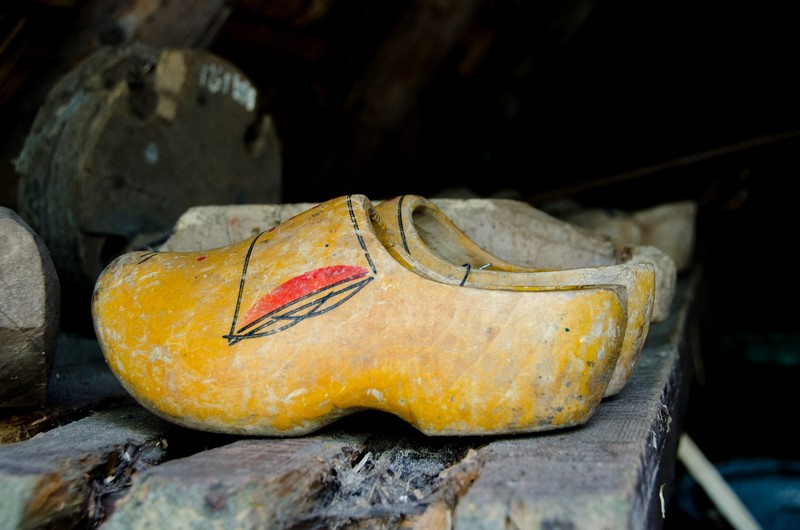Wooden shoes, or “klompen” in Dutch, have a long history in the Netherlands that dates back to the Middle Ages. These shoes were originally worn by farmers and other working-class people as a practical and durable form of footwear.
The earliest known wooden shoes from the Netherlands were discovered in a peat bog in the province of Drenthe, and are believed to date back to the 13th century. These early klompen were made from a single piece of wood, and were shaped to fit the foot. The wooden sole was held to the foot with leather straps or thongs.
During the 16th and 17th centuries, wooden shoes became more popular in the Netherlands. The Dutch economy was primarily agrarian at the time, and farmers needed sturdy footwear that could withstand the wet and muddy conditions of the polder land. The wooden shoes protected the farmers’ feet and kept them dry. Additionally, wooden shoes were also worn by people working in other outdoor occupations such as fishers, sailors, and woodcutters.
In the 18th and 19th centuries, wooden shoe production became more industrialized and efficient. The shoes were made in a two-piece design, with a separate wooden sole and upper. The upper was made from a combination of leather and fabric, and was held to the sole with nails or wooden pegs. The wooden soles were often made from willow, poplar, or ash, which were all readily available in the Netherlands.
During the 20th century, wooden shoes began to lose popularity as more people moved to urban areas and modern footwear became more widely available. However, wooden shoes are still worn by some people in the Netherlands, particularly in rural areas. They are also worn by some people as part of traditional costumes, or as a fashion statement.
Nowadays, wooden shoes are not only made for practical use but also for decorative purposes, and are often painted with bright colors and adorned with intricate designs. They are also worn as a form of cultural expression and are considered a symbol of Dutch heritage. The wooden shoes are also used as a souvenir for tourists visiting the Netherlands.
In conclusion, wooden shoes, or “klompen”, have a long history in the Netherlands that dates back to the Middle Ages. The earliest known wooden shoes from the Netherlands were discovered in a peat bog in the province of Drenthe, and are believed to date back to the 13th century. These shoes were originally worn by farmers and other working-class people as a practical and durable form of footwear. Wooden shoe production became more industrialized and efficient during the 18th and 19th centuries. Wooden shoes began to lose popularity in the 20th century but are still worn by some people in the Netherlands, particularly in rural areas and as a form of cultural expression and symbol of Dutch heritage.


